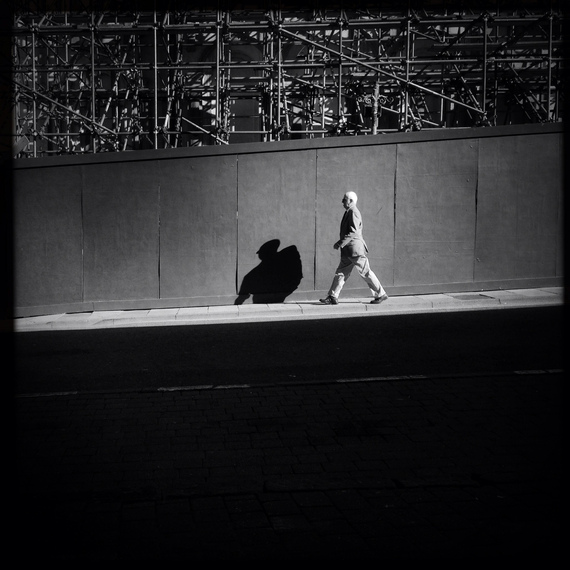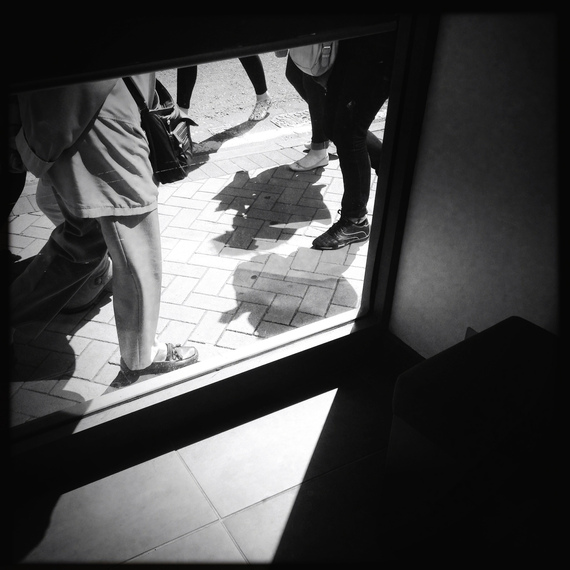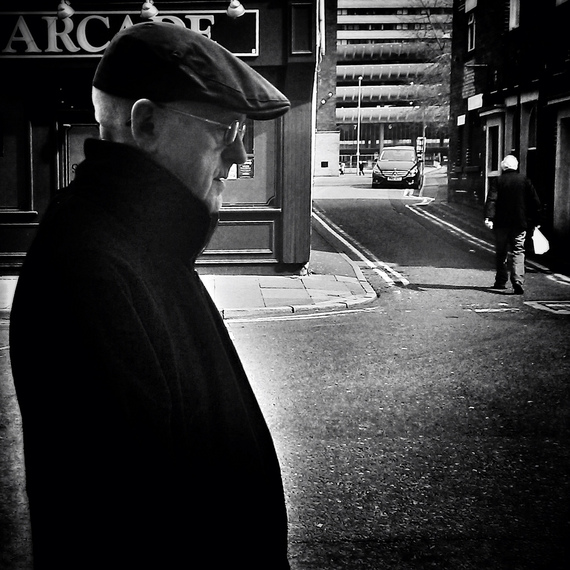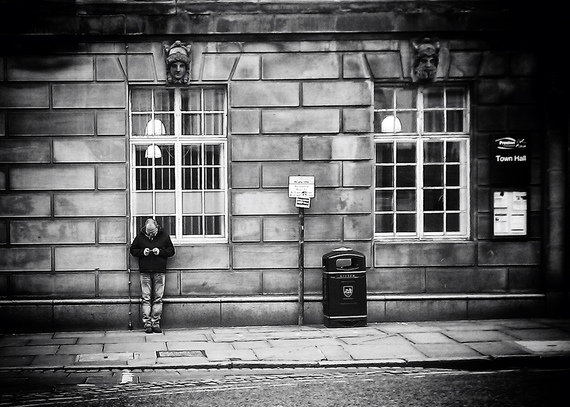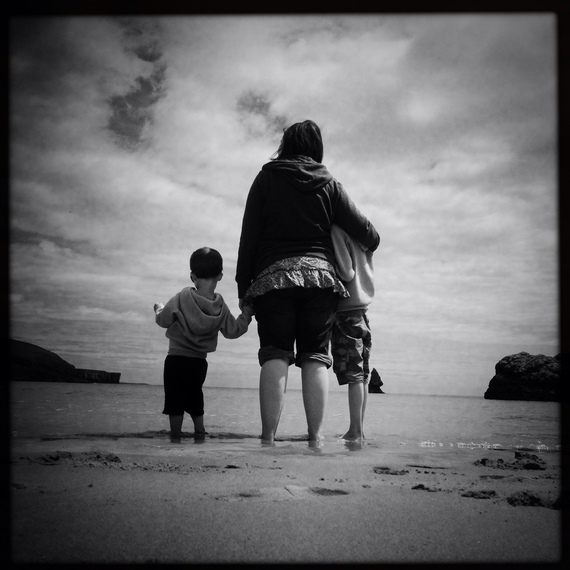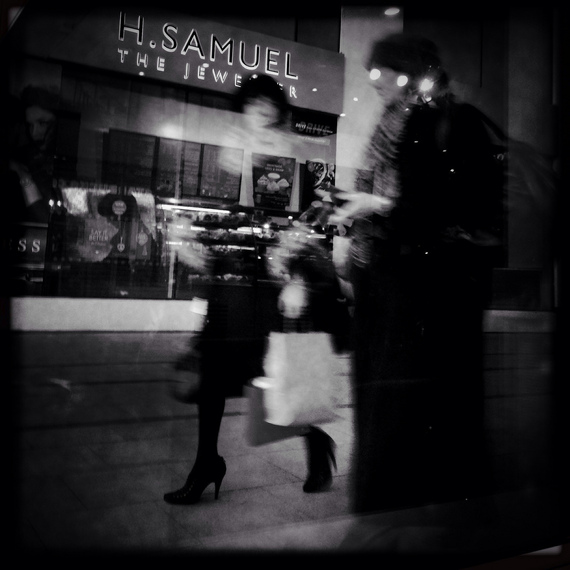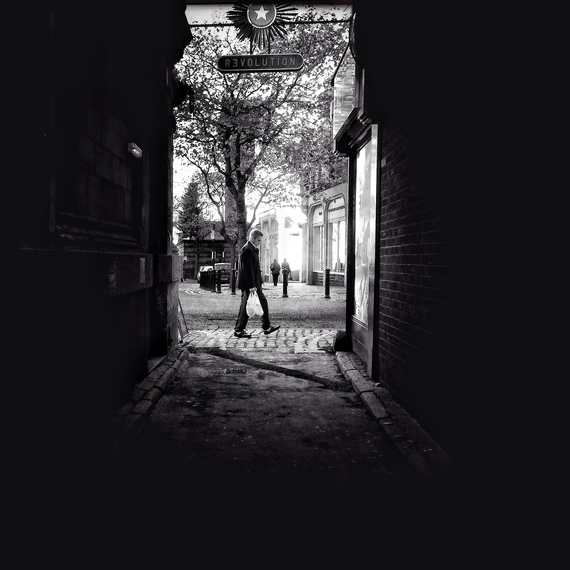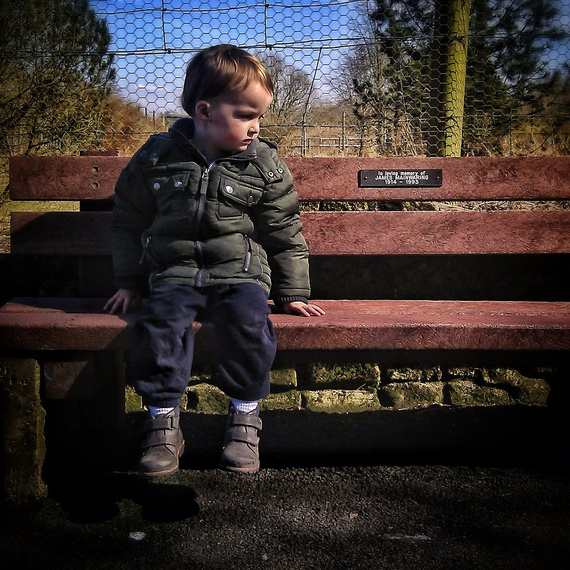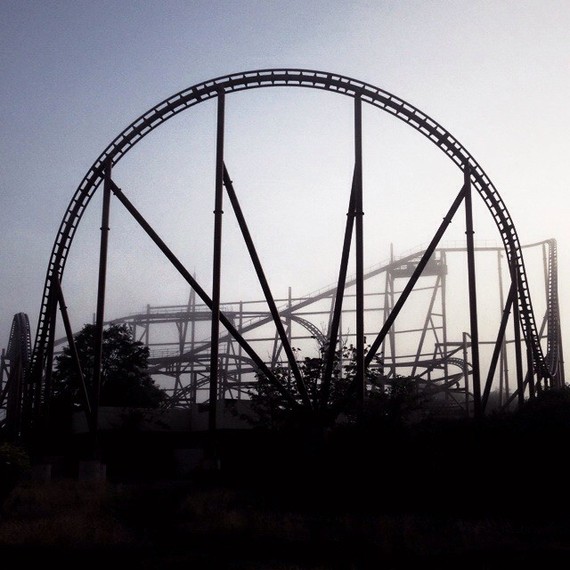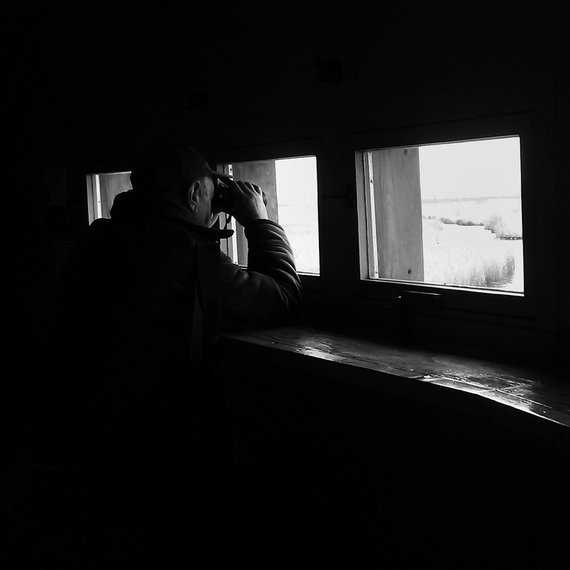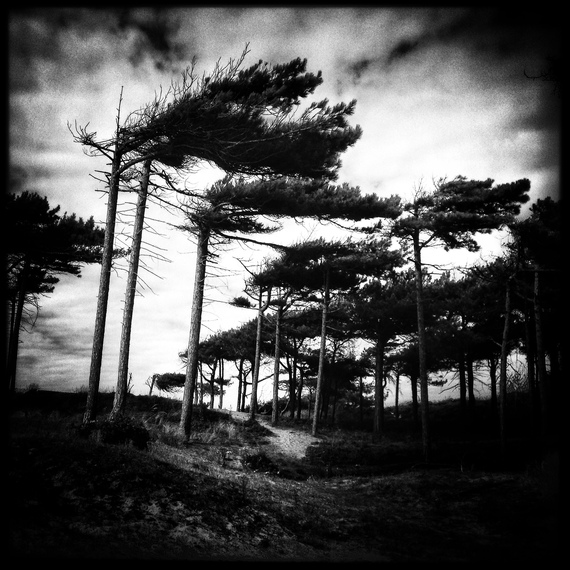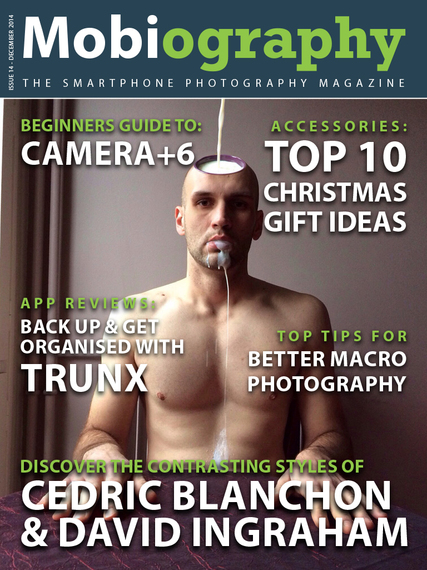A Chat with Andy from Mobiography! by Dilshad Corleone
All Photos Copyright Andy Butler
I first came across Andy when, by chance, I'd notice on Twitter that a certain Mobiography website had published my photography walk video from Barcelona. I felt well chuffed and very flattered, so I decided to write, as one does, a thank you mail. I think our friendship started from there.
From that day onward, we have exchanged many emails, phone calls and I have been lucky enough to be featured in his wonderful E-Magazine, which I truly recommend it to everyone (and if you want to be featured, keep reading)! Even more, I all heartedly suggest you to go and have a look at Andy's photos, which have that romantic melancholic feel that draws you in his stories!
Photography never stops to surprise me, I have met more incredible people trough this medium, than anything else, and this is exactly why I love being part of this amazing community! But without further ado let us dive into this interview.
D: Dilshad A: Andy
D: Let's start with the classic one: Tell me a bit more about yourself and how mobile photography has changed what you do?
A: I live in Lancashire in the North of England with my wife and two boys. By day I'm a web designer/developer and around web geek. I rarely switch off, I'm always on the go which frustrates the hell out of my wife.
I've always had an interest in photography ever since an early age. I remember playing as a child with my auntie's old box type camera. In later years in photography class at Art College I loved the post production dark room work, developing film and exposing prints. I suppose this is where my love of dark, contrasty black and white photography started.
Several years ago I bought myself to a Nikon DSLR digital camera. Thinking back I do wonder if I was seduced by its large size, knobs and dials. Whenever possible I was out taking pictures but often found the bulky DSLR awkward to carry, especially on days out with the family.
This is why mobile photography has captured my attention so much. The freedom it offers me and the simplicity of the equipment that's required is like a breath of fresh air. Combined with its integration into social media platforms is what makes smartphone photography so accessible to everyone. I love it. Now I solely shot with my iPhone, I find it much more convenient, instant and less obtrusive than the DSLR.
This is why a few years ago I decided to set myself a personal 365 project, where I attempted to take a photo a day for a year. This is where the power of mobile photography really comes into its own.
D: How did you discover mobile photography?
A: It was a couple of years ago. I had an Android phone, I had heard about Instagram and had previously searched for the app in Google Play but as it was an Apple only app it wasn't available to me at the time. In May 2012 I was sat in the garden enjoying the sun when I had another look and bam, there it was. It had been released for Android and that was the beginning.
For the rest of that year I played about with Instagram but it's when I rediscovered Flickr that I really started to take my mobile photography more serious and started interacting with those in the mobile community.
D: You mentioned that you were undertaking a 365 project. Can you tell me more about this and the why's behind it?
A: At the start of 2013 I came across an article about undertaking a 365 project. I'm not fully sure of the origins of the 365 project but I know there are many people and websites out there devoted to the concept. Basically it involves taking and publishing 1 photo a day for 365 days and is an excellent way to help you discover more about yourself and your photography, what makes a good picture and what doesn't.
I had often thought about doing something like this before but had never managed to get past day 2 or 3 (mainly due to the impracticalities of carrying a bulky DSLR about and a busy lifestyle). This time it just seemed like the right time. It was the beginning of a new year, a new start; I was starting a new job and was planning out a website about smartphone photography so it all seemed to click into place. I have found it to be an excellent way to quickly improve and hone my photographic skills and style.
D: How did you find taking a photograph everyday for a whole year? Is there a story that has touched you?
A: It was very tough and I'm sorry to say I ran out of steam. Some days you finished with a selection of photos to choose from whilst other days you are scraping the bottom of the barrel. It's a project that requires commitment and I began to question which is best, to keep to the schedule of taking a photo a day or miss a day or two in favour for producing better quality images? In the ned I was more comfortable with the idea of posting quality images when they happened rather than a steady stream of sub-standard work just for the sake of it.
Story wise, if anything the killer photo opportunities were all missed due to the time lag on the shutter, incorrect exposure, blurred images or not having the camera to hand. These were basic short comings of the phone I had at the time. Some harsh lessons were learnt during that period.
One story that does spring to mind is a photograph titled 'Texting Solitude'. I was out on one of my lunch time photo walks and heading back to work when I spied a man at the end of the road. He was standing against the wall of the town hall totally engrossed in his mobile phone. I guess he was either texting, surfing the internet or maybe even checking photos he'd taken that day - who knows.
I got to the road junction praying that he'd stay as he was, not move and that no one would encroach on the shot and my luck held out. I love the simplicity of the shot and I think the space around him really helps to convey the solitude of the man.
D: How do you keep up with your inspiration and enthusiasm?
A: I have to say it's tough. There are days when the weather is bad, which in the UK is most of the time. There are days when I have commitments with work or family and other days when all I want to do is rest.
That said there is nothing better than the feeling of coming back with a photograph that you are proud of and I think that is what drives me.
Inspiration wise I follow several photographers on Flickr and twitter including Richard Koci Hernandez, David Ingraham, Mark T Simmons and Dilshad Corleone. I do a lot of reading on mobile photography websites such as grryo.com. It's the human stories and the views of other photographers that really interest me and I suppose this gives me a standard to aim for.
My enthusiasm comes from the fact that I'm pushing myself every day. I try to explore new areas of the city around me. I'll walk down alley ways that many people pass by without even noticing. I look up above, through gateways, arches or doorways. The main thing that mobile photography has given me is a renewed sense of my surroundings. It has changed the way I look at the world.
D: What subjects fascinate you and how would you describe your style?
A: My first love is landscape photography, I love the outdoors but don't get many chances to really explore the subject as I'd like. I tend to get a bit self-conscious shooting in public environments but as I work in a small city and when I was undertaking the 365 project it forced me out of my comfort zone and into street photography so urban locations have been a prominent feature in my work. I think this is a good thing.
I love black and white photography but I don't necessarily set out to specifically shoot black and white as the end result. Maybe it's a subconscious thing or the fact that it's often dull and grim up north as they say round here. I love dark contrast in a photograph. I tend to burn in the edges of my images and add a hint of blurring as I find it gives the images a moody, old feel and helps draw the viewer's eye into it.
D: What apps do you use to take your photographs?
A: I mainly shoot with the app ProCamera8. The new version offers a lot of flexibility with focus and exposure and the interface layout and handling just suits me fine. I will then either import the image into Oggl which allows me to play about the Hipstamatic film and lens combinations, my favourites being Jane or John S lens with either Blackeys Supergrain or DC11 for black and white or Sugar film for a colour look.
Alternatively I will edit using Snapseed which is an extremely versatile photo editing app.
D: Do you have any incredible encounters or a story that really is part of your photographic journey that you would like to tell us?
A: Not so much encounters as I tend to prefer to observe subjects rather than interact with them. As I mentioned the 365 Project helped shape my photographic style and approach but I suppose the biggest stories or lessons I have learnt relate to missed photo opportunities. The couple in McDonalds holding hands across the table (missed because I didn't have my phone to hand), the child running to her granddad at the train station with arms outstretched (missed due to a 5 second delay in the shutter going off) and the monk in full habit walking towards me in the high street (again, camera in my pocket and taking too long to get it out and fire it up).
The lessons learnt here are to always have your camera to hand as you never know when a photo opportunity will present itself.
I recently took a portrait of my son sat on a bench. At the time it seemed quite ordinary but it wasn't until I had edited the image and was about to post it to Flickr under a different name that I noticed the plaque on the seat. It said in loving memory of someone dearly departed. It was then I noticed Luke was looking down to a spot next to him and it struck me that to a stranger this raised the question, is the child looking at the place where a loved one once sat or does the 'loving memory' subject line relate to the child. When you look at the photo with these questions in mind it takes on a whole new meaning.
I think it's this ability to capture a snapshot of time and tell a powerful story with it that is the crux point of photography. To be able to tell a story in a single moment is something very special but also a difficult thing to do.
D: Have you ever gone into an artistic slump? This is something that I am interested in for I keep fighting the downs, sometimes it's really hard for me and I have to force myself to come out from it...
A: Hell yes. For a good portion of this year in fact. It has been very tiring to try and juggle work, family, the website, my digital magazine and my photography. I think everyone will go through a slump sooner or later. It's only natural.
My advice would be when one hits is step back and take a break. Go somewhere new or try different things, use different apps and explore different environments from those which you're used to. If you shoot street go for a walk in the country, if you are a landscape photographer go urban. Set yourself a series of projects based on different themes such as public transport or urban decay. I find having a focus is essential as it gives you a sense of purpose and direction to what you do.
D: I read, I think, one of your tweets on this, I was really interested reading maybe more about it... Have you thought about writing an article and discussing the whys behind inspirational slumps and how to get out from them? I think a lot of people; I firstly would be really interested to find out more!
A: Yes, it was a reply to a tweet from @wearejuxt asking about people's thoughts on getting out of a slump. I think an article on the subject would be an interesting idea and it's something I have been discussing recently with a friend.
I can only speak from my own experience and I guess there are many others out there far more experienced than me but I think the key really lies in pushing yourself, getting out of your comfort zone, exploring the world around you and above all enjoying what you do.
D: How has social media helped you to connect and meet new people or to develop new ideas?
A: Social media is a core part of my daily routine. It is a fantastic tool that enables me to keep track of what is going on in the world of mobile photography, share things that I find and above all it has enabled me to make friends with others around the world who share a common interest.
It's such a major part of everyone's lives these days its truly amazing how fast it has developed, how it is shaping the way we live our lives, and how we consume information. Facebook, Twitter, Instagram, Eyeem, Flickr, Google+ the list goes on.
It's also something that has enabled me to build a following to the website, www.mobiography.net. It's been a key ingredient in it's rising popularity.
D: As well as your website, you have just launched a digital magazine about mobile photography. Tell us about it, what made you decide to publish on the ipad?
A: The magazine is available on the iPad, iPhone and on android and is a bi-monthly publication.
In 2012 a friend told me about the idea of producing a magazine app for the Apple Newsstand. I was impressed by the interactive nature and tactile feel that the platform offered. Also when I saw the high definition quality of images on the platform, especially with retina display, I immediately realised the potential for using this medium to showcase mobile photography.
These days' people are consuming content in so many ways and it struck me that both mobile photography and the tablet/smartphone market were two areas that gelled together beautiully. The iPad has revolutionised the way I work and it just seemed like a logical progression that could help raise the profile of the subject and the work of other mobile photographers and artists.
D: I have to say your Mobiography magazine is absolutely wonderful, well designed and such a great resource for mobile photographers. What is the magazine about and what would you like to achieve from it?
A: Thanks I'm glad you like it. It was an honour to have you agree to do an interview for the debut issue.
With the magazine I'd like to use it as a medium to connect with and showcase the work of other iPhone photographers and artists out there and tell their story. I also look to feature interesting insights, tips, tutorials, photo essays as well as accessory and app reviews. Basically, too build a good resource of inspiration and information.
It's the human aspect of mobile photography that interests me. I'm in awe of the quality of work being pushed out on sites like Flickr and Instagram. Its sites like these that are giving photographers a world stage to showcase their work which is fantastic.
But the one thing that really fascinates me is the fact that by day these talented people live ordinary lives. They work in the local bank; they are housewives, college lecturers or IT professionals. Ordinary people doing ordinary jobs but thanks to mobile photography and social media are producing extra ordinary work. I think events such as the Mobile Photo Awards is testament to that.
D: If someone would like to be featured in future magazine issues, what do they have to do?
A: First thing I would say is the magazine is open to everyone. I would encourage people to join in on the Flickr Group; I do a weekly roundup of the best submissions to the group so I'm always looking for new people and interesting work to showcase. From here I'll also be featuring a selection of photos in the magazine and inviting people to be interviewed for it.
I don't care if you're a veteran or a newbie. I'm looking for interesting work, people who have a story to tell, something that's maybe a bit different. If someone has an interesting idea for an article, a project they want to talk about or review which they'd like to contribute then get in touch via the website or email I would love to hear people's ideas.
D: What are your plans for the future of the magazine?
A: I still think it's early days for the magazine, my hope is that it will build up into a community of like-minded mobile photographers to help showcase and promote their talents, to get people to share their experiences and knowledge. God knows where this will go; I mean just look at what 'We Are Juxt/Grryo' has achieved, exhibitions, worldwide 24 hour photo projects, a network of mobile photographers and bloggers. The sky is the limit if you have the ideas, time and a community behind you.
D: How can someone get a copy of the magazine?
A: The magazine is available in the Apple Newsstand and on Google Play. Download and install the app then for those who hit 'Subscribe' they also get access to special subscriber only issues.
D: Lastly, how can people connect with you?
A: I hang out in a variety of places but mainly:
People can also join in on the Flickr Group.
